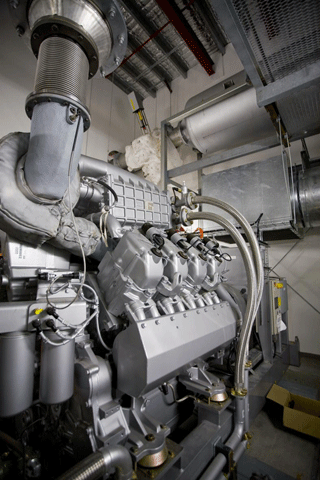
|
Published: 22 May 2012
Call to reduce barriers to decentralised energy generation
The Property Council of Australia, ClimateWorks and Seed Advisory have called on the Australian Energy Market Commission to streamline the grid connection process for embedded generators.
Their joint proposal to the Australian Energy Market Commission urges changes to the National Electricity Rules (NER) that would mean faster, easier and less expensive grid connection processes for embedded generators.
Cogeneration (combined heating and power) and trigeneration (combined cooling, heating and power) are two types of embedded generation. In cogeneration, gas-fired units generate electricity and deliver it locally, avoiding some of the high costs of transmission. The heat from electricity production is captured and used to heat and cool buildings. Cogeneration systems are more than twice as energy efficient and emit less than half the greenhouse gas emissions of a coal-fired power station.
Among the other benefits of cogeneration and trigeneration identified in the proposal are:
• higher private sector innovation in energy production, delivery and consumption;
• the potential to reduce network infrastructure investment as co/trigeneration increase
• the prospect for enhanced security of energy supply.
The recommendations in the proposal come from a research project conducted by ClimateWorks, an Australian non-government organisation dedicated to achieving low carbon prosperity. The ‘Unlocking Barriers to Cogeneration’ research project identified aspects of the NER that deter embedded generators from connecting to the electricity grid,, making the connection process ‘uncertain, complex, burdensome, time consuming, inefficient and costly’.
The proposal recommends the following changes be made to the NER:
1. Provide an automatic right of connection to the grid and standard access terms for generators that meet ‘Automatic Access Standards’.
2. Give enabled embedded generators a right to export electricity to the grid.
3. Provide an improved connection process for embedded generators that are ineligible for automatic access and a right of export.
4. Allow electricity network companies to charge an optional fee-for-service so as to promote collaboration with their customers.
5. Oblige electricity network companies to publish annual network reports identifying where capacity is limited.
According to the proposal to the Energy Market Commision, these changes will reduce the need for case-by-case negotiations between electricity customers and the Commission, replacing these with a standard process that is clearer, more certain and efficient. It is asserted that these changes will also encourage greener energy without compromising the integrity of the national electricity grid.
The proposal argues that as the built environment is responsible for around 23 percent of Australia’s emissions, reducing ‘green’ barriers will unleash significant carbon abatement and economic opportunities.
Source: The Australian Property Council




